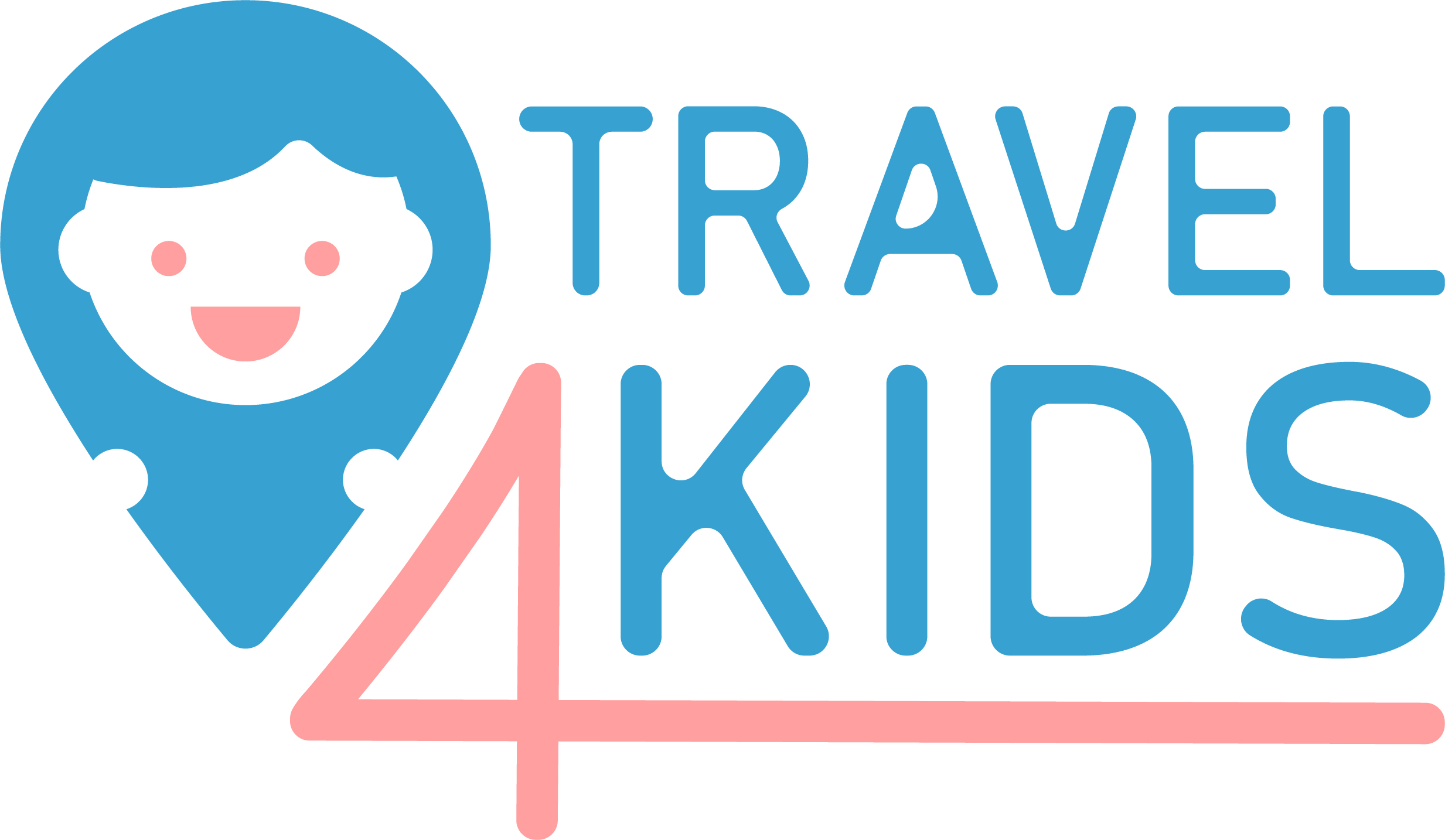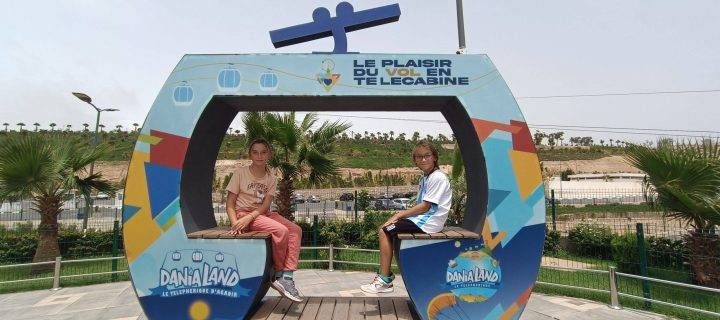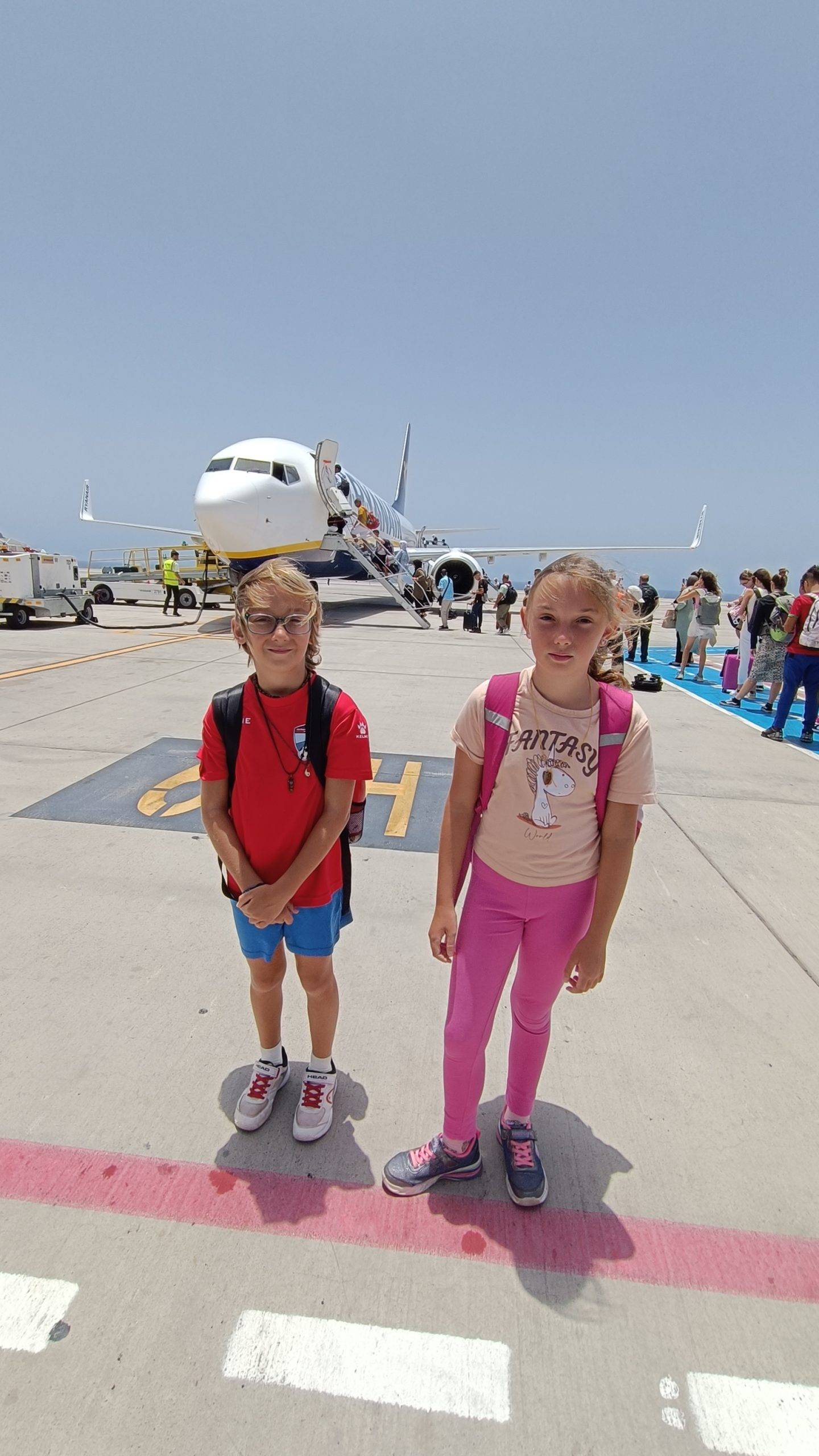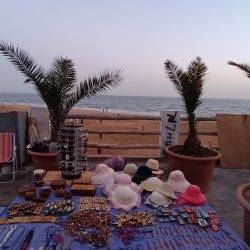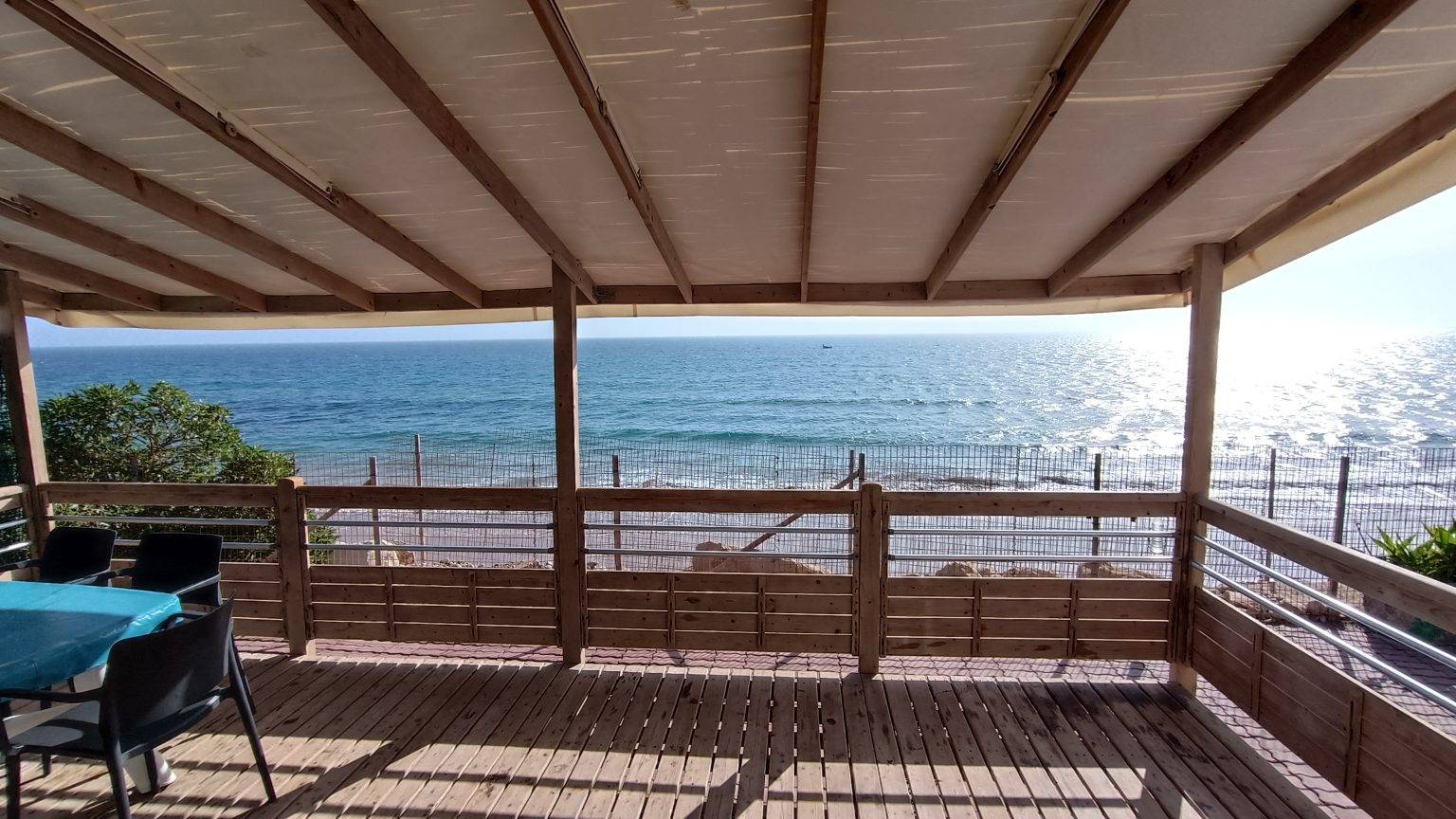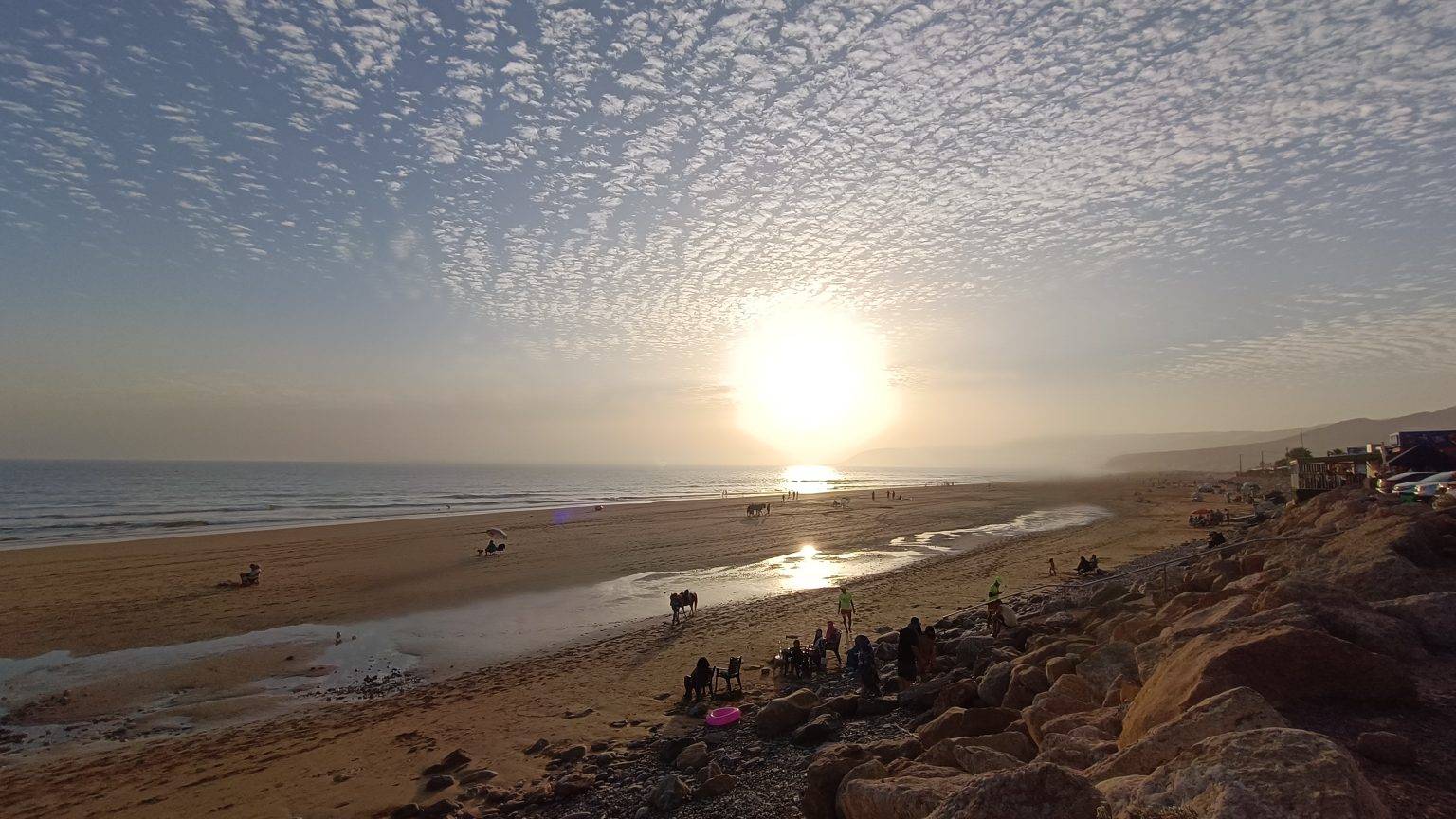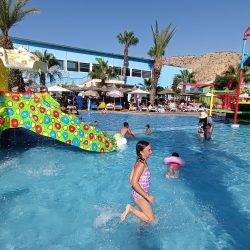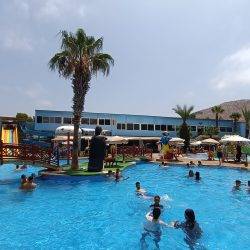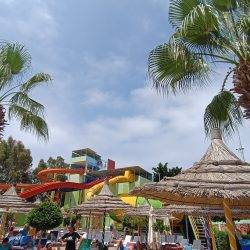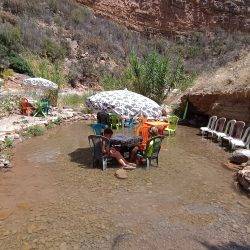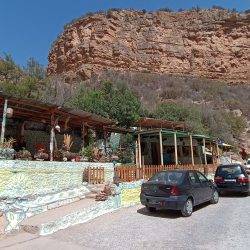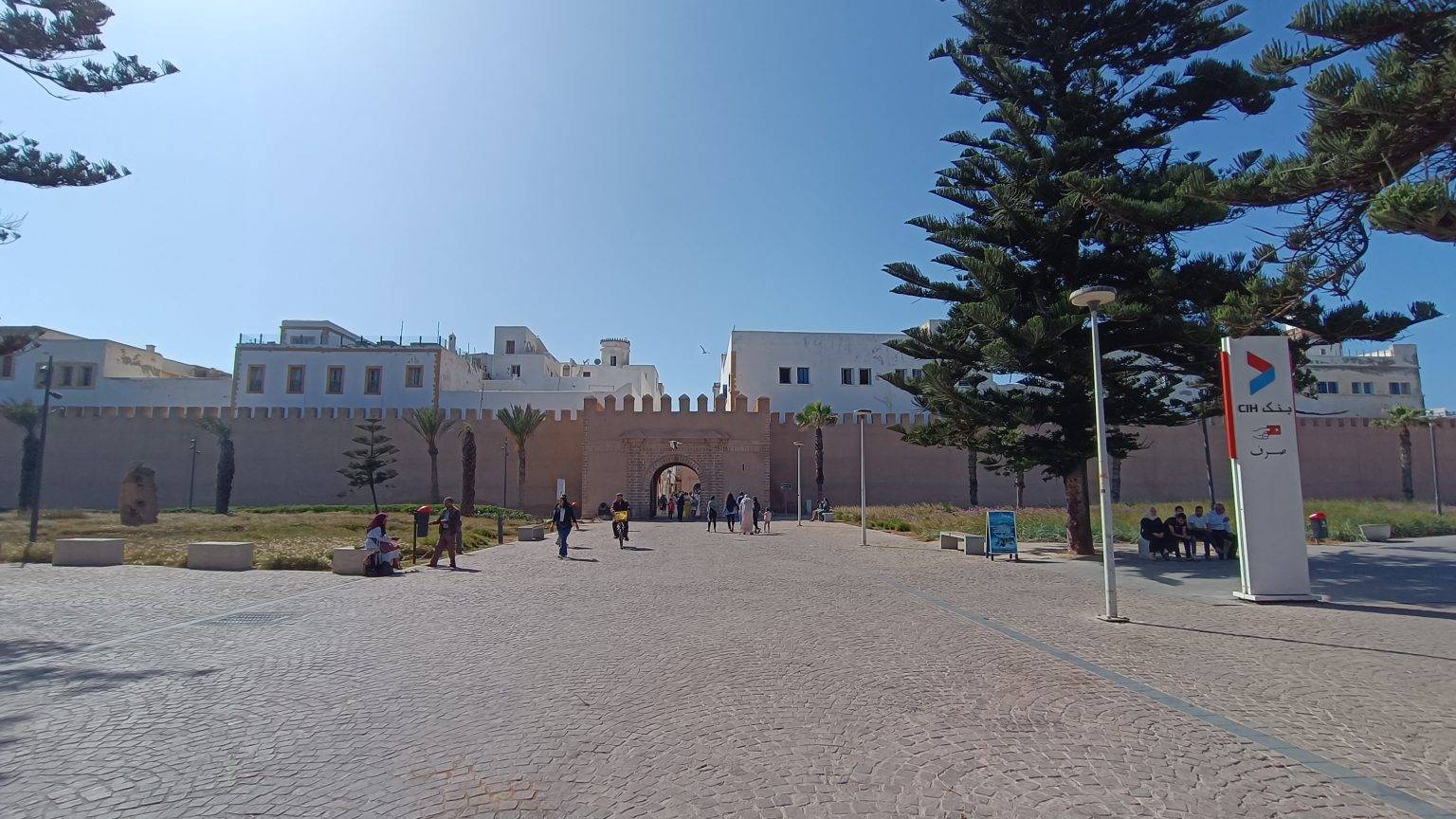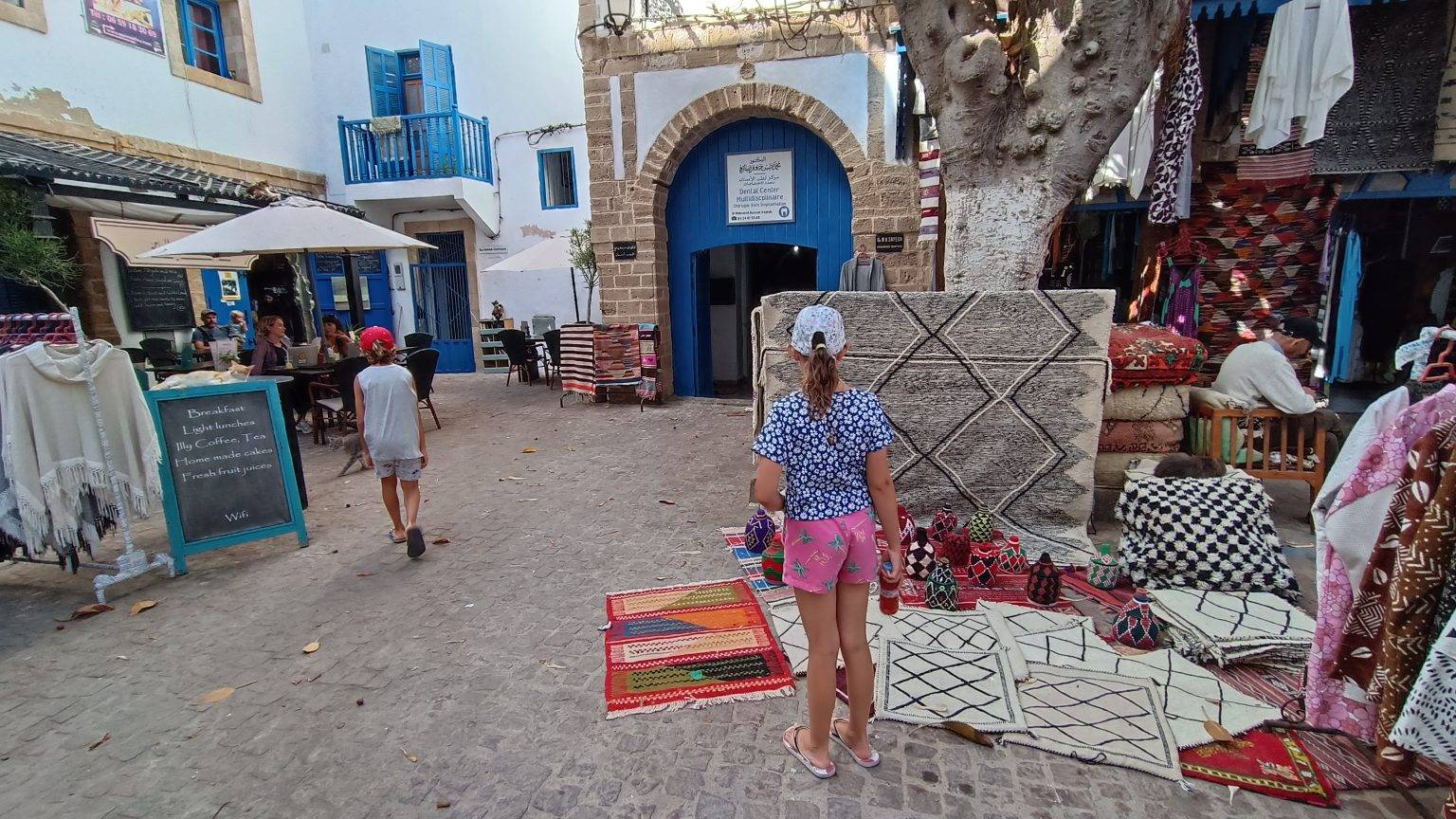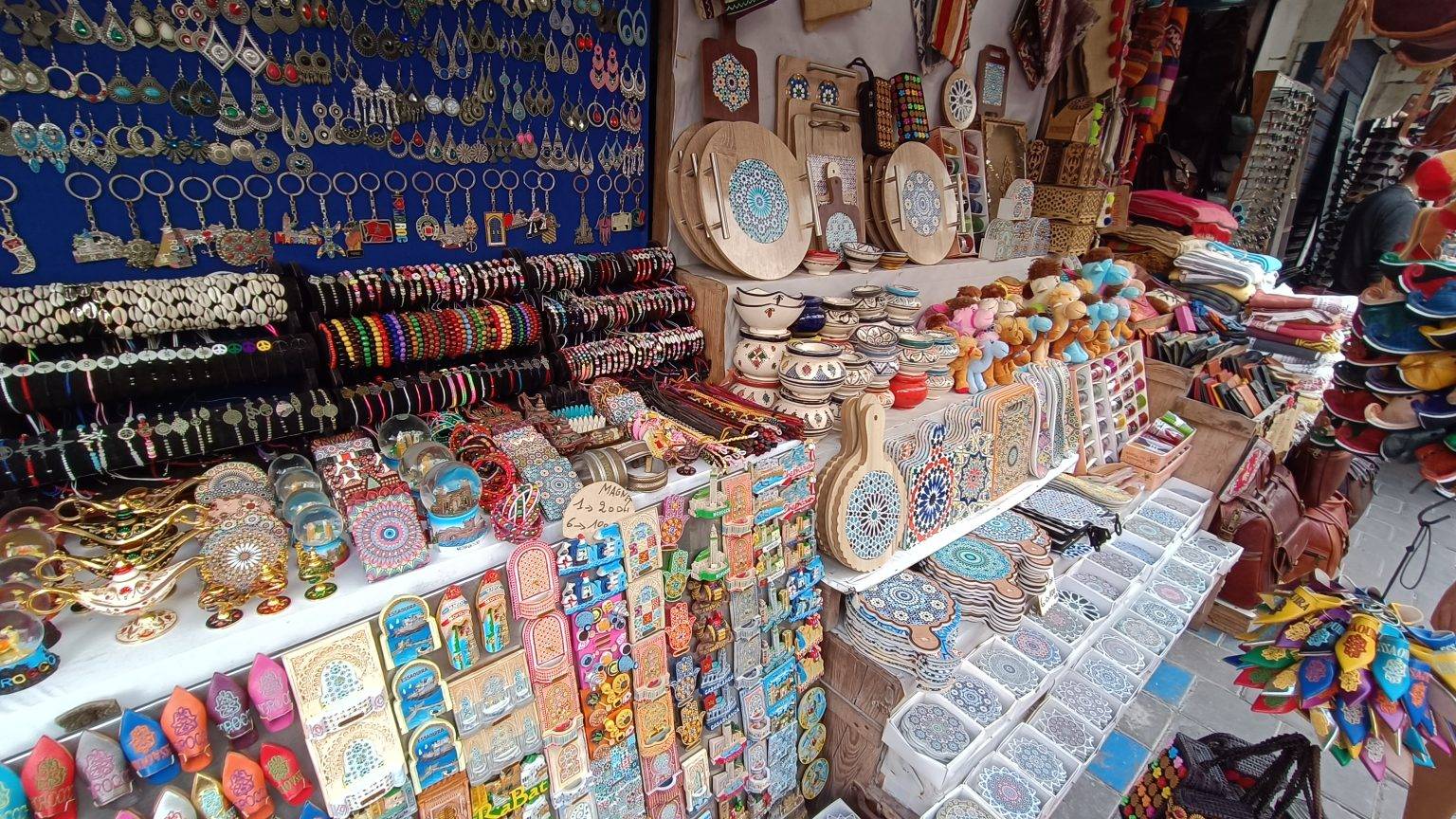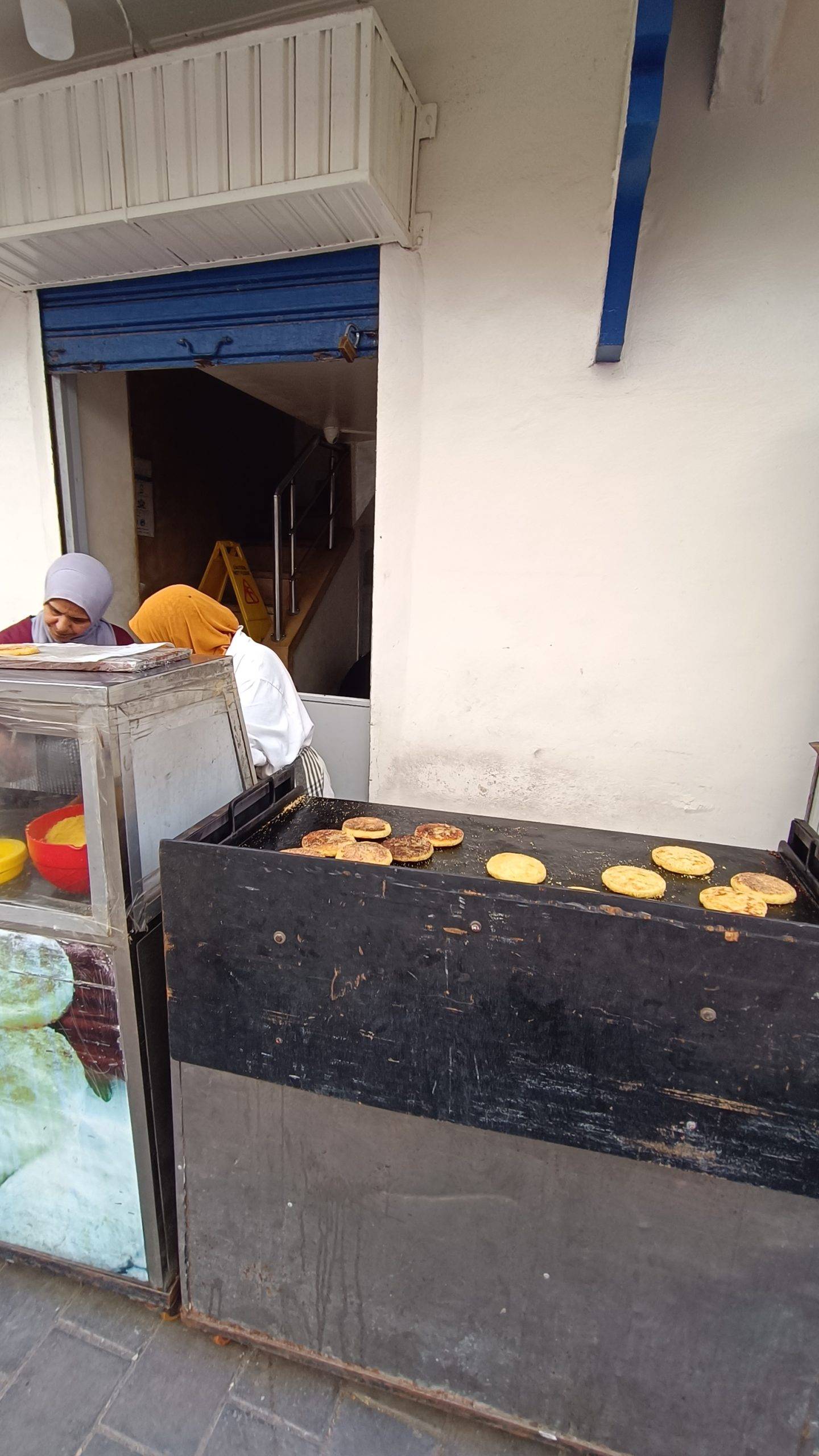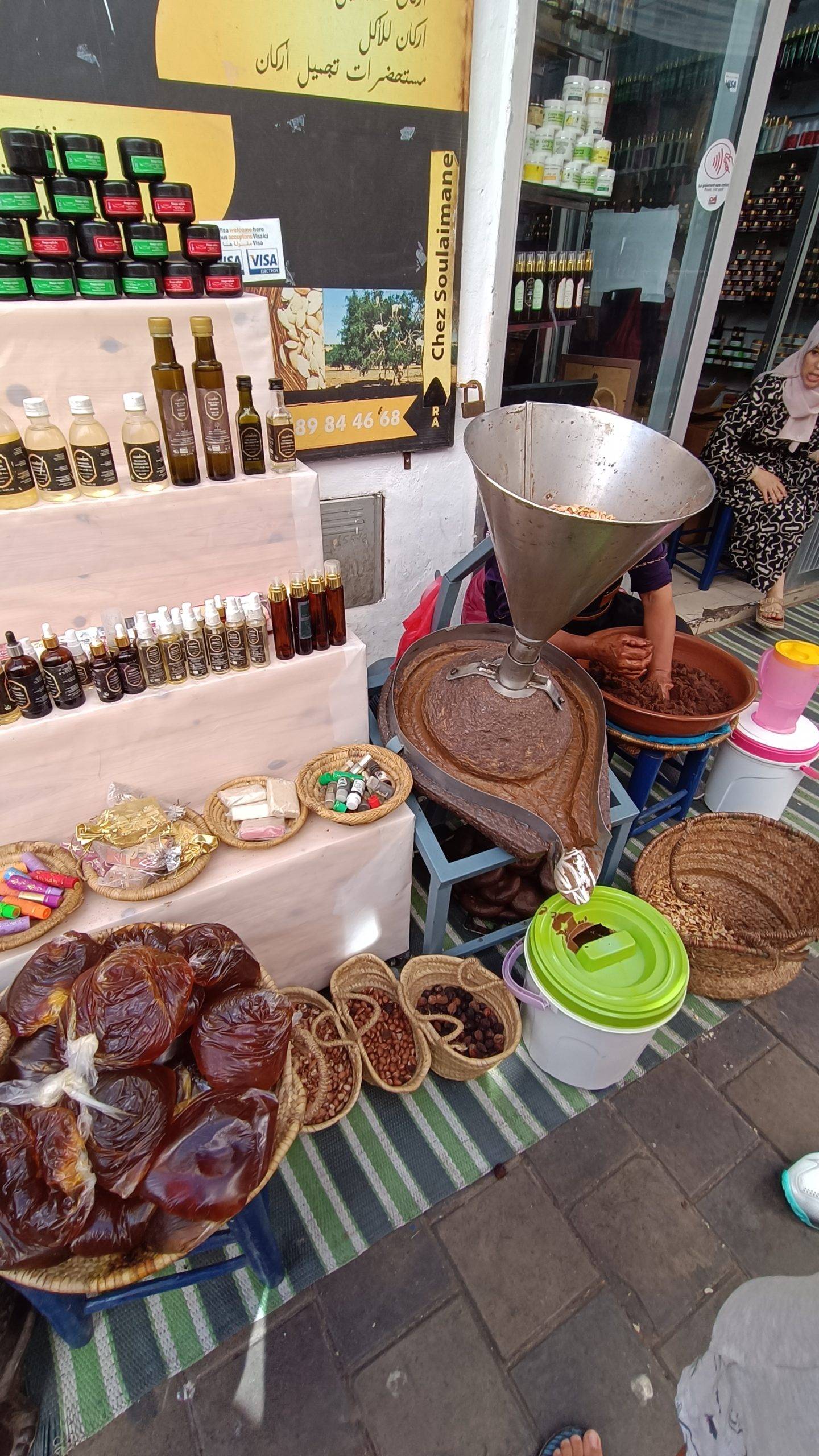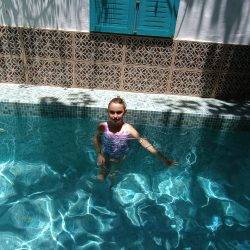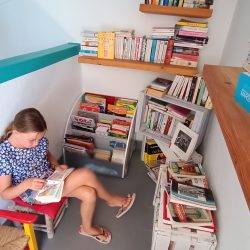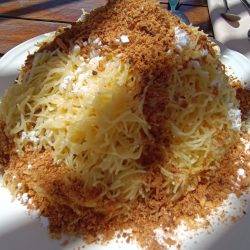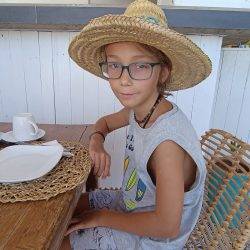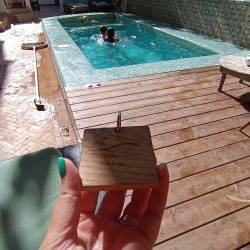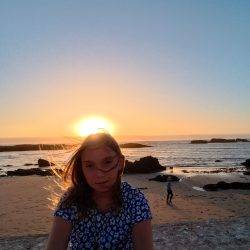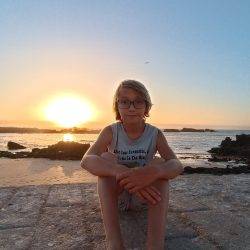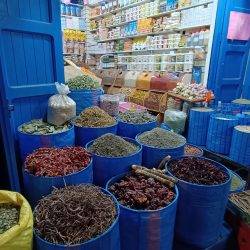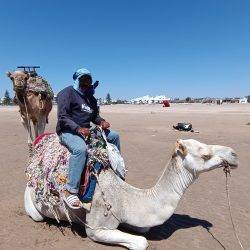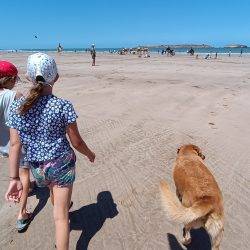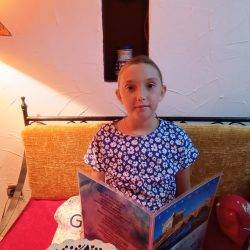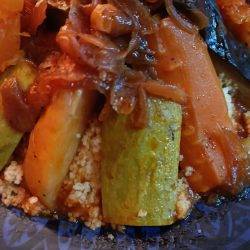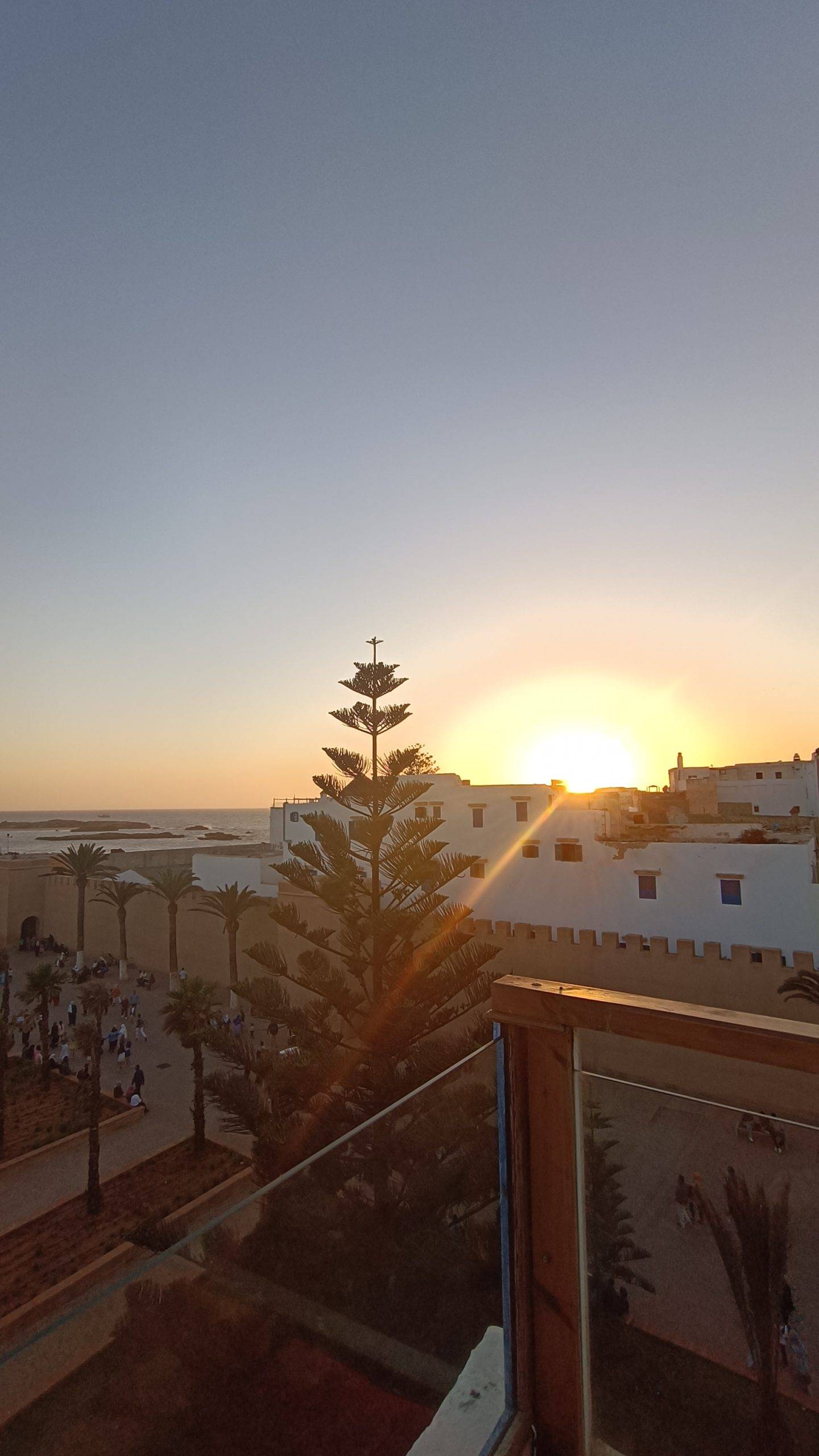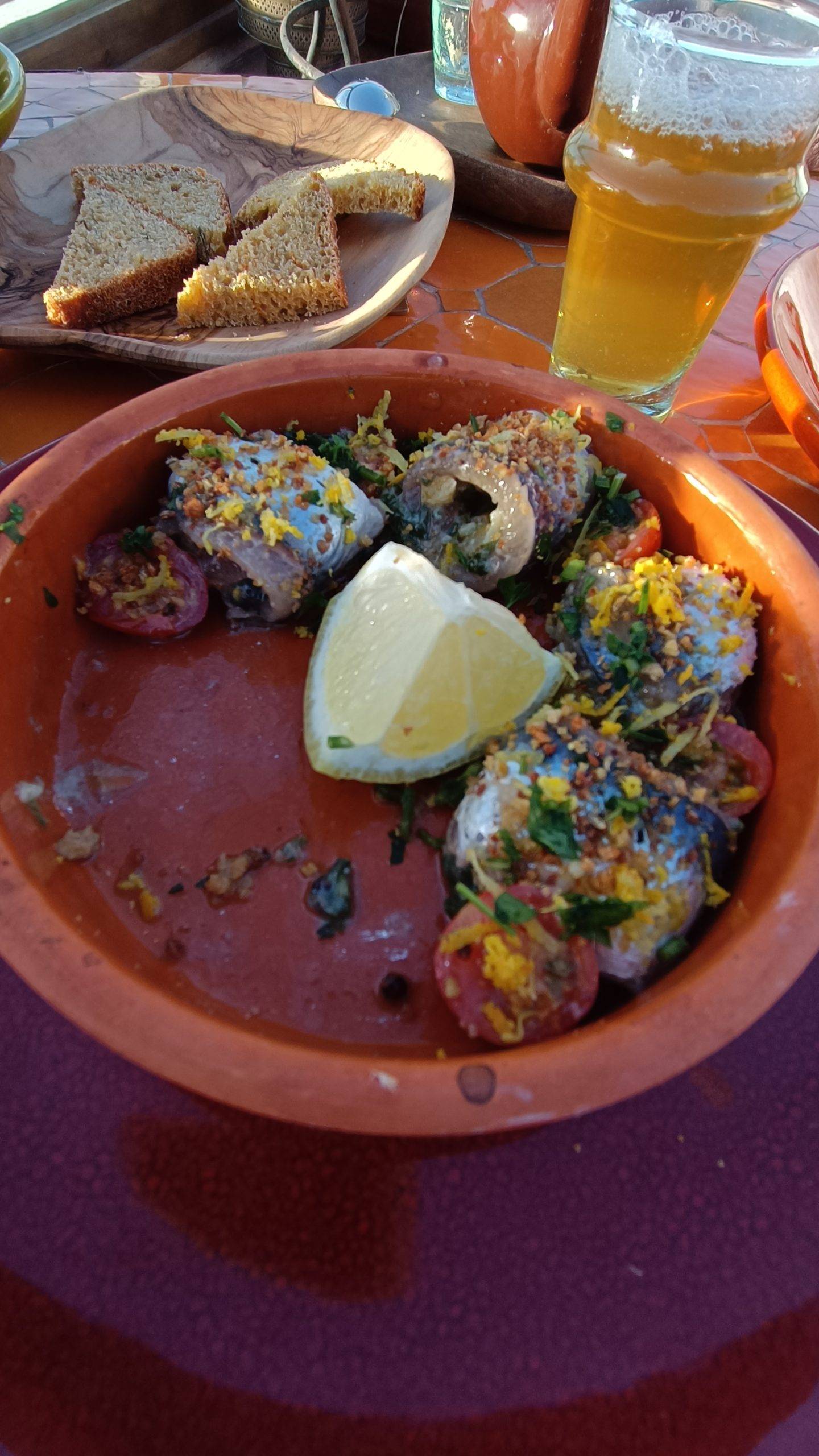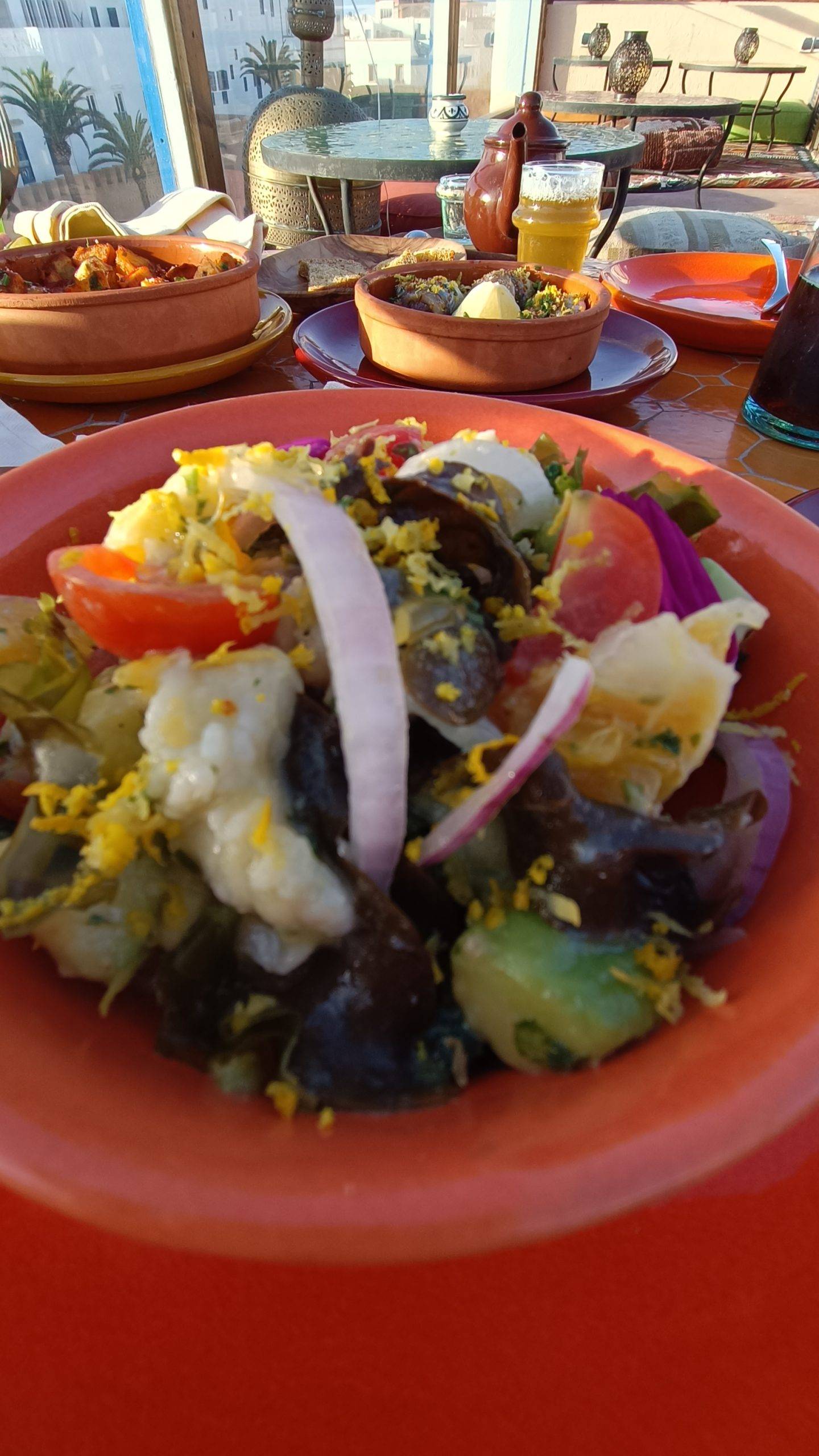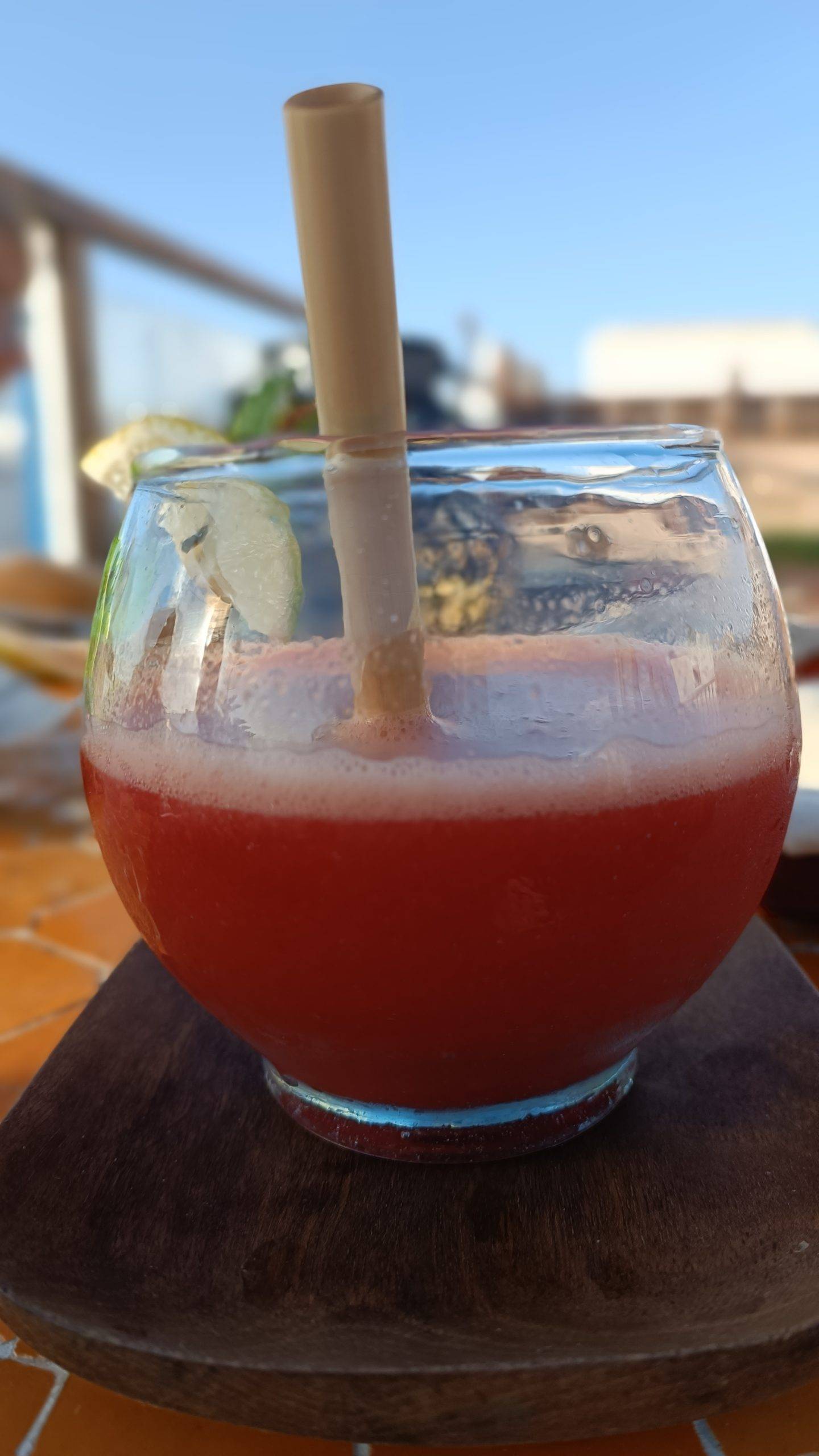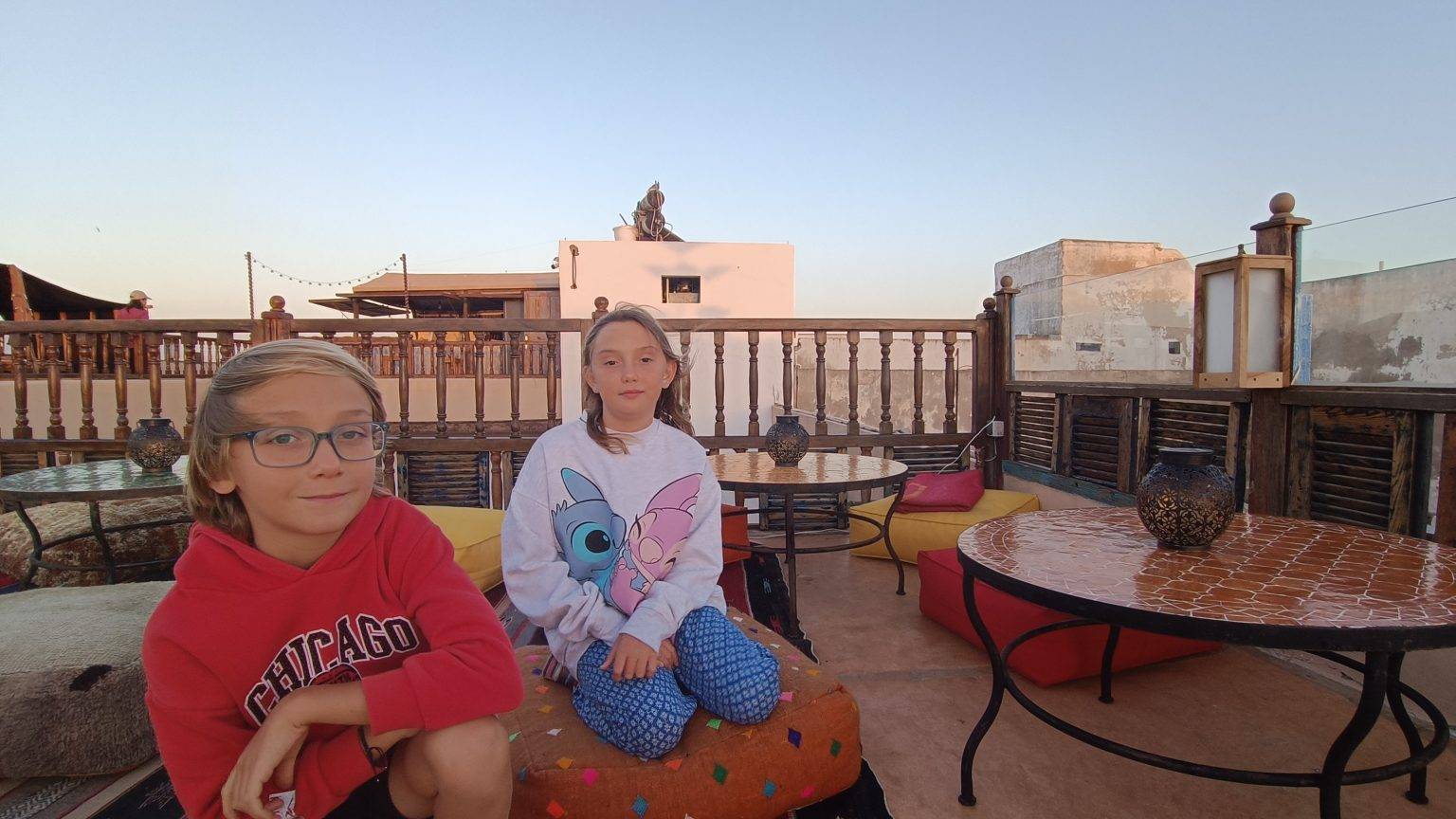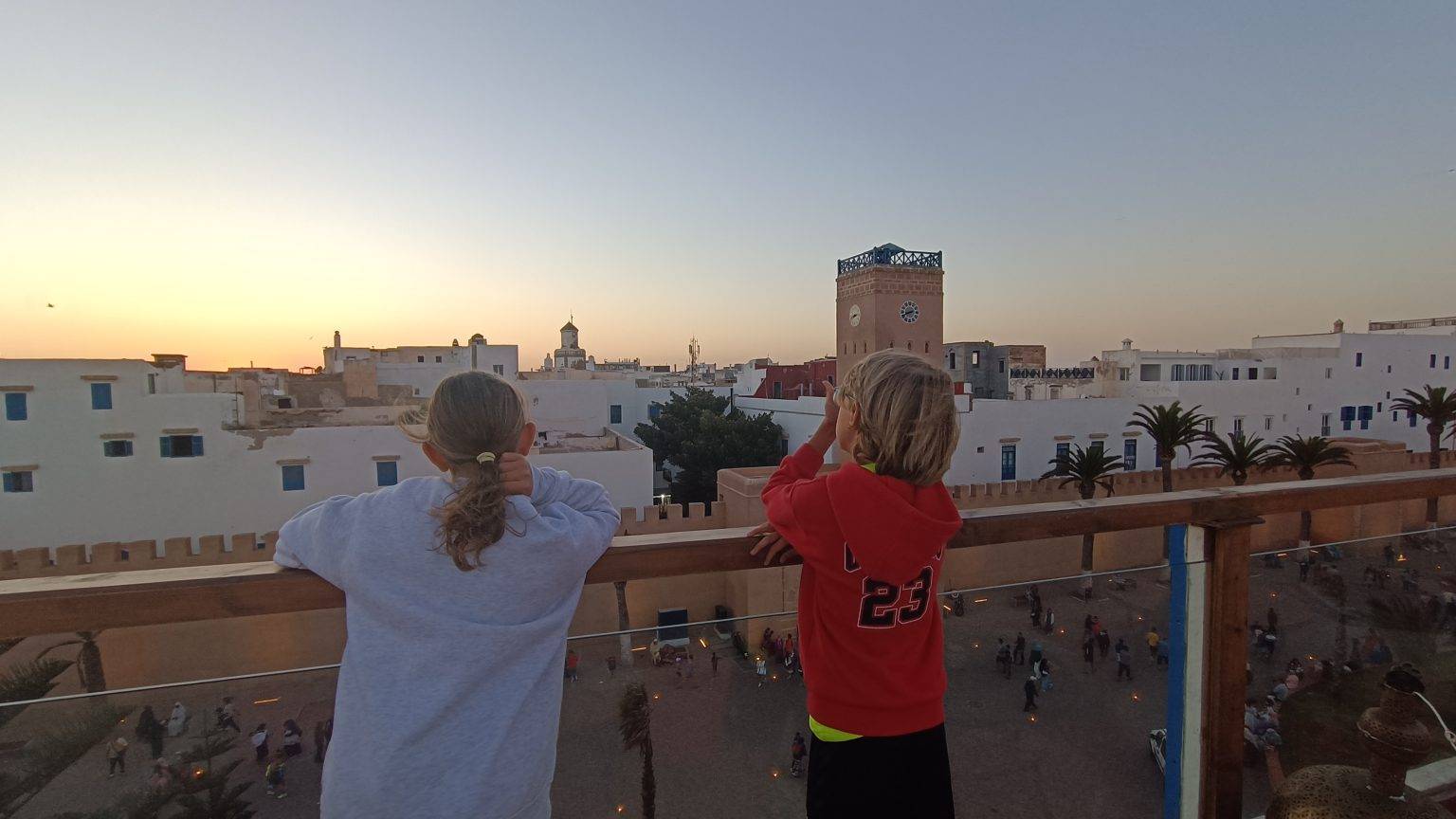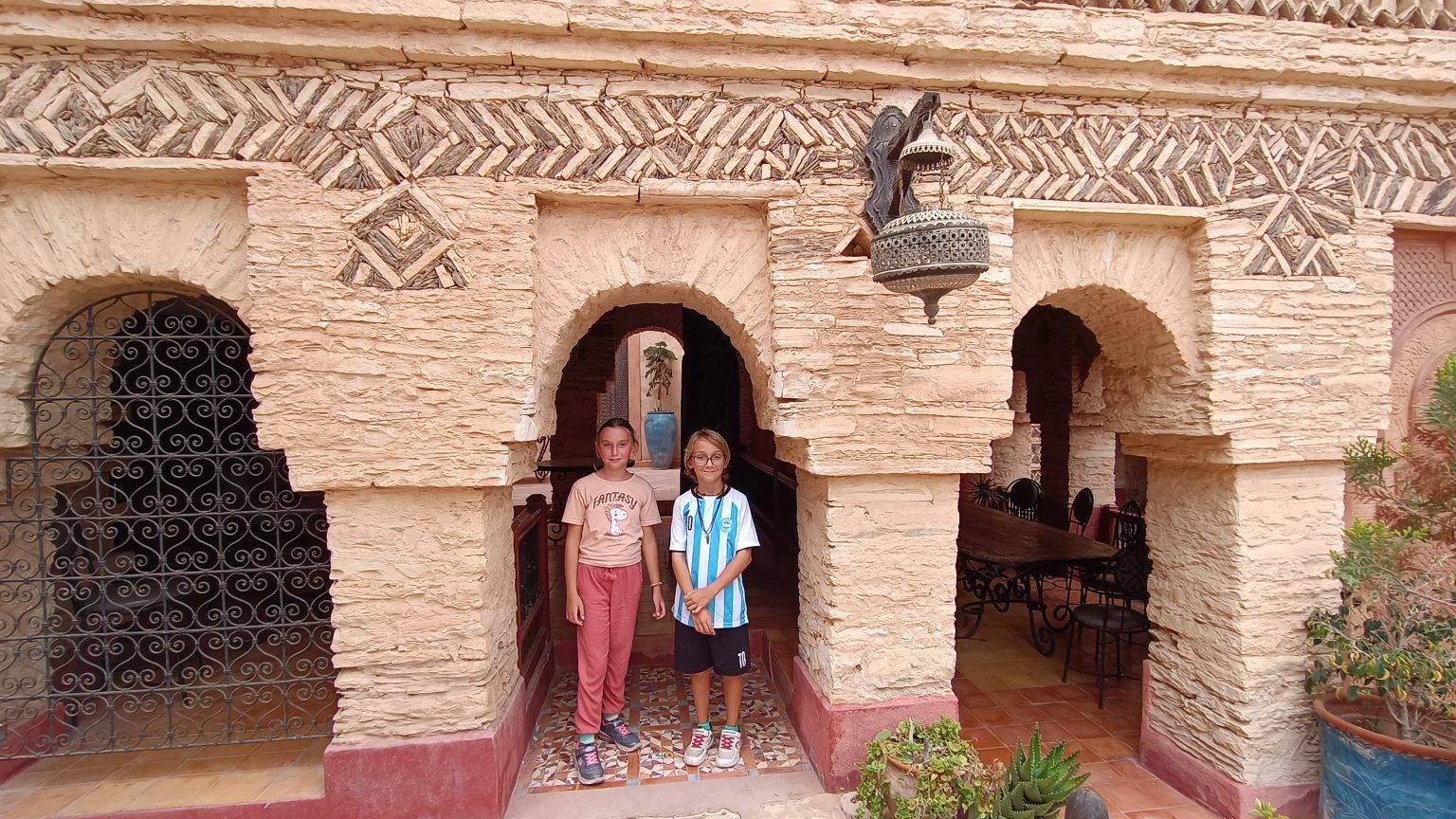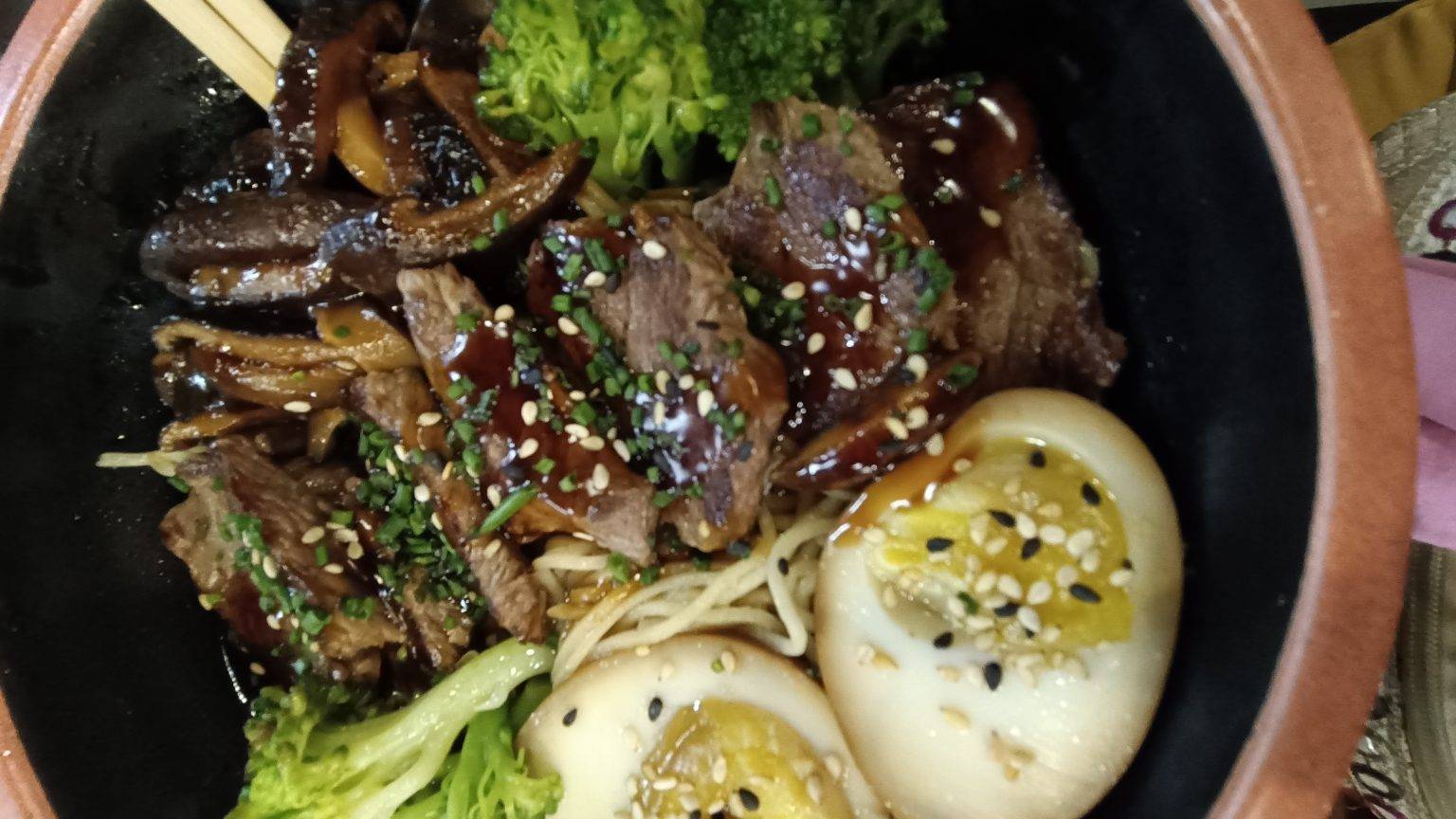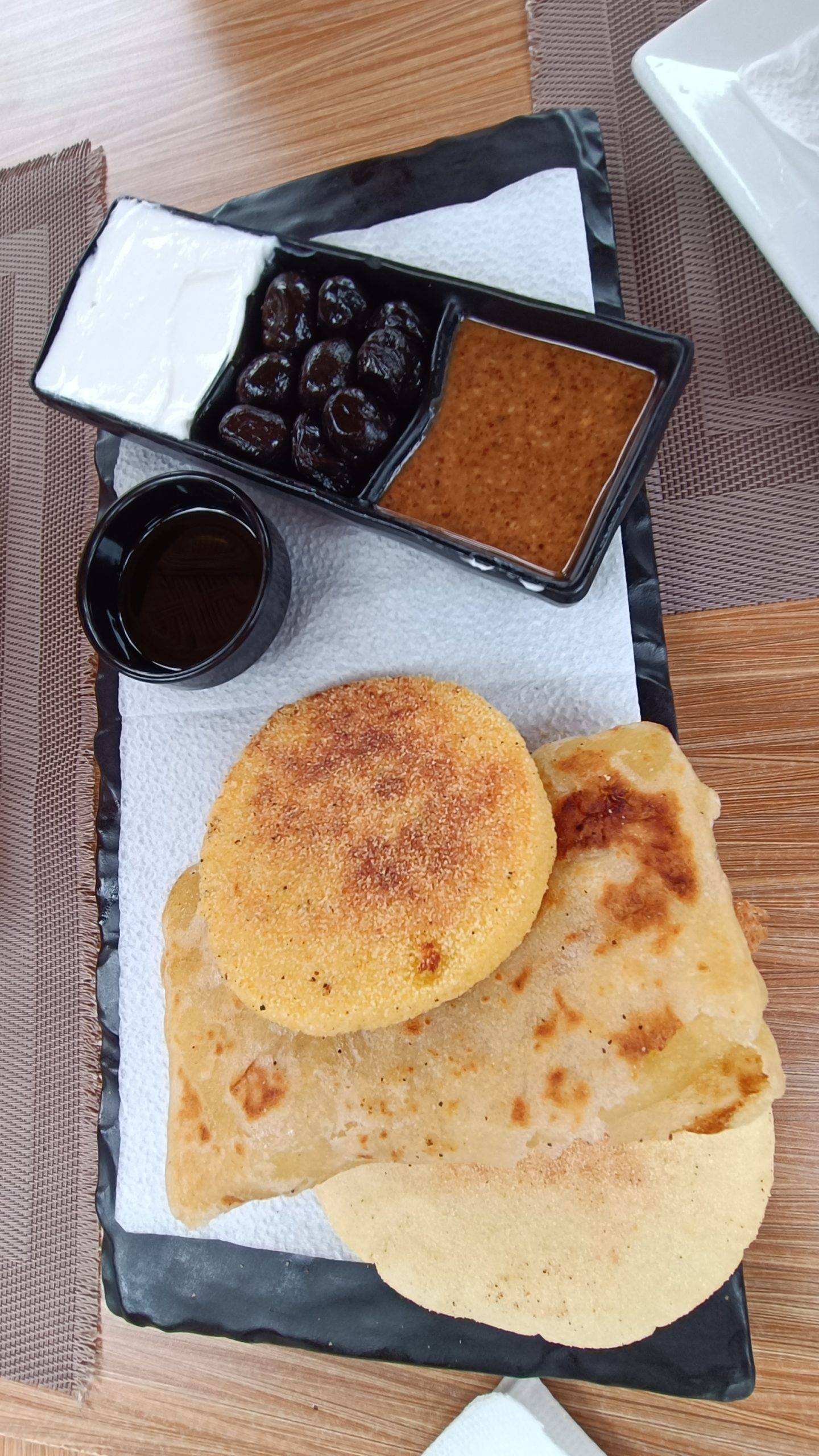Jolita’s family from “Travel 4 kids”, with Greta and Oskaras in the lead, set off for a completely unfamiliar continent – Africa. And for their first encounter with this continent, they chose exotic Morocco – or rather the southern Atlantic and western coast of Morocco.
Morocco with children is a challenge, but it is doable. Travelling with slightly bigger children I think is a good decision. We don’t travel with an agency, we like independent travel and our own pace. This way we get to know the country better, we don’t necessarily visit the tourist places. So we invite you to travel together and experience the smells, sounds and tastes of exotic Morocco with children.
Morocco with children
First stop – Taghazout
Morocco with children started with Taghazout, a fishing village on Morocco’s Atlantic coast, north of Agadir. It is famous for its surfing beaches. Taghazout is also famous for the Paradise Valley, on the Tamraght River, a gorge surrounded by palm trees with pools and waterfalls.
Taghazout itself is a small town with its own charm, but it is rather poor and lacking in cleanliness and order.
Atlantica Parc Hotel and Water Park
We chose a resort hotel with bungalows and a water park, Atlantica Parc, close to the town. This choice was a “tribute to the children”, as the hotel itself was not very cheap, but the price included unlimited visits to the water park. The hotel is a collection of houses reminiscent of the seaside houses of my childhood, but with all the comforts inside. However, by our European standards, it would definitely not be a 4* hotel. Conveniently, there were several restaurants nearby, one of which we had a very tasty and inexpensive breakfast two mornings. There are also several shops where you can buy snacks, soft drinks and water. We booked the hotel through booking.com – safe and secure, as when we tried to book directly the system crashed and was not trustworthy.
There is also a large beach where you can go horse, pony and camel riding.
The water park was really good by Moroccan standards. It’s small, but with lots of activities for visitors of all ages, animation programmes and plenty of lifeguards. The water park has several eating places – a fast food restaurant and a normal fresh food restaurant.
If you are staying in Agadir but don’t have a car, you can conveniently reach the water park with a shuttle service and inclusive tickets.
Paradise Valley
The Paradise Valley is part of Morocco’s High Atlas Mountains. It is about 20 minutes from Taghazout, surrounded by palm trees and waterfalls. When you arrive, you’ll have to walk another 15 minutes to reach this beauty, which is probably more impressive at other times of the year than in summer.
We preferred to stop at a roadside restaurant with a NATURAL FISH SPA – we’ve never been to one before – where we refreshed ourselves with a table in the water, fresh juice and an incredibly tasty tajine with goat meat. Highly recommended, you’ll recognise it from our photos. The host even speaks a little English and we could pay in euros.
Next stop Essaouira
As you drive from Taghazout towards Essaouira, keep your eyes open for roadsides – if you’re lucky, you’ll see trees covered with goats. Argan trees are a real delicacy for them.
Essaouira is a city on the Atlantic Ocean. Water sports enthusiasts flock here (our family’s kiter tried this spot himself). The resort also boasts a harbour and a defensive fort, and the Essaouira Medina is a UNESCO World Heritage Site. The town itself doesn’t have many modern hotels, but you can always find a small but cosy hotel or riad here.
Hotel
We stayed in a small hotel called VENT DEL DUNES, not in the Medina itself, but close by, which also has a small swimming pool. When travelling with children this is very important for us. The owners of the hotel are French and have a son of a similar age to ours. We booked the hotel through booking.com and as GENIUS 3 we got a free amazing breakfast every day.
By the way the hosts offer a daily lunch – about 15 eur per person with dessert. One day we came back here for lunch – because the Moroccan chef was preparing a dish that is served at Moroccan weddings. You don’t usually get this in restaurants, so we were delighted. We tried a Seffa dish made of small pasta noodles hiding a piece of chicken. The macaroni is flavoured with raisins, cinnamon and icing sugar. Sweet and exotic – no other way.
Every evening we went to the Medina, walked through the narrow streets that turned into a continuous market, breathed in the smells that are not always good, counted the little cats that live in the streets and tried to tame the Moroccan bustle.
Beach and entertainment
The main beach nearby is really nice, but very dirty. It’s everyone and everything. Camels, horses, caitians, bathers… The amount of rubbish in the water is simply astonishing, and our only family member who tried the water activities unfortunately got sick…
We were very tempted by camel riding, but our children didn’t dare – they didn’t think it was very nice to ride on a big animal. You can book in advance and without much ado – I can’t hide the fact that this is the most frustrating thing for me – and negotiate and understand the value of the service, so as not to overpay, because the first price can run into tens and even hundreds of euros.
What and where to eat in Essaouira
We highly recommend visiting two places in the Medina that offer delicious food. The first place we discovered is called M’RISTE JOUHAR. A place of authentic food, with an incredibly hospitable owner who not only fed us delicious food, but also gave us free traditional mint tea and biscuits. We had tajines, couscous (which by the way was our children’s favourite on this trip). Definitely recommended.
The second one, which left a very good impression and has an unreal view from the roof, is KSOU. Here we had Moroccan ceviche, sardines and couscous.
Outside the Medina, for more European flavours, we recommend LA COUPOLE, which also has live music nights, and BEACH AND FRIENDS, where we had very tasty dishes for lunch, which were definitely not inferior to the taste (and, incidentally, the price) of European restaurants.
Last stop – Agadir
Agadir was probably the least attractive but necessary stop for our flight home. It’s a tourist town that was destroyed by an earthquake in 1960 and has been rebuilt as a modern tourist city. Here you can enjoy oriental activities such as hookah, camel riding on the sands, horse riding on the seaside, sea fishing, golf courses and tennis courts, nightclubs and discos. Agadir has three zones of attraction – the city centre (main streets – Hassan II, Mohamed V), the coastal zone (tourist zone with hotels, restaurants, cafés, bars) and the New Talborjet zone (area of attractions).
We also visited the Medina, but this had nothing in common with the Essaouira Medina, which we had already visited. Rebuilt in 1992, it is more like a museum without the typical Medina hustle and bustle, with only a few merchants and very much touristy now. Entrance costs 4 euros for adults, 2 euros for children.
We also tried the DANIALAND funicular, which offers a breathtaking panorama of the whole city of Agadir.
Agadir’s Oufela Kasbah is the city’s most magnificent site. It is a fortress overlooking the city and the beach, 236 metres high. After the earthquake of 1960, the defences were rebuilt in their old location, with only the front door remaining authentic.
The location is ideal for admiring the city from all sides and watching the sunsets.
You can also book in advance with a comfortable transfer.
By the way, here we learned that a water park and other amusement park are due to open later this year. So apparently Morocco with children will now not only end, but also begin at this park.
What and where to eat in Agadir
Quickitchen – Sushi, Wok & more – on our first evening in Agadir, we found a very nice little restaurant a little further away from the centre, offering a choice of Asian, American, Italian and Mexican cuisine. The mix didn’t promise much, but what we tasted was really fresh and tasty. We particularly liked the ramen, sushi and sushi pizza. We were very surprised by the delicious dinner.
YUZAKI – Asian (Japanese and Thai) cuisine. You can reach the restaurant by car or taxi, but you won’t regret it. European interior, fresh food, super service. We really missed Asian cuisine after a week of Moroccan food, so after the success of the first evening, we chose a similar restaurant again and were pleasantly surprised.
Morocco with children – practical tips
Personal documents
For citizens of the Republic of Lithuania, a passport is required when travelling to Morocco. It must be valid for at least 6 months from the end of the trip. No visa is required for short stays for Lithuanian citizens travelling to Morocco.
Mobile connection and internet
Get an internet card at the airport as soon as you arrive, as you won’t be able to use a Lithuanian or European card when travelling around the country, or it will cost a lot. To do this, take an old phone without a card to put the card in.
We bought an ORANGE card – 20 GB for €20.
Currency exchange and card payments
The Moroccan currency is the Moroccan Dirham (MAD). Money exchange is available at banks, hotels and airport exchange offices. It is forbidden to take Moroccan dirhams out of the country. When leaving the country, local currency must be exchanged for euros or other acceptable currency.
We exchanged the first 100 euros at the airport, as we had heard that many places only allow cash payments. Unfortunately the exchange rate at the airport was the worst. When we exchanged at Essaouira in the Medina we got a better rate. However, on average you have to calculate that for 100 EUR you get 1000 MAD.
Many restaurants and hotels accept card payments. We use myTU payment card when we travel because:
- We can withdraw up to €200 without having to change, and withdrawing local currency at an ATM is cheaper than exchanging euros at the airport.
- When paying abroad, we always choose to “pay in local currency”. When we are asked whether we want to pay in euros or in local currency when withdrawing cash or paying by card, we always choose to pay in local currency to avoid additional currency conversion fees!
- There are no additional fees for paying by myTU card if you pay in a currency other than euro (as is common with other traditional banks). Standard exchange rates apply for card payments outside the euro.
Car rental
Although we had a few contacts from local guides or friends who had already visited Morocco with children, we found the cheapest and best deals in our partner system, where a car with full insurance for a week cost us just 220 euros.
There are a few important things to know:
- All rental companies charge a deposit of between €500 and €1500.
- The credit card for the deposit must be in the driver’s name, because if you are a family member, your card will not be valid if you are not the driver.
- An additional driver costs extra.
Hotels and riads
Accommodation in Morocco is very wide ranging, from very cheap hostels to luxury hotels. However, when visiting Morocco, it is worth at least once choosing a traditional home – a riad. The word “riad” comes from the Arabic term for garden, “ryad”. It is a traditional Moroccan house with a garden and a small water body, usually a fountain, as the main interior feature.
Hotels do not necessarily meet European standards. In our experience, a 4* hotel didn’t have a single bar of soap, or a broken shower door was standard in another hotel. At the Essaouira we missed at least a small fridge to cool water for a hot day.
Moroccan cuisine
Moroccan cuisine is classified as Maghreb cuisine, which is part of Islamic cuisine, due to its similarities with the culinary traditions of neighbouring Algeria and Tunisia. Moroccan cuisine derives from the local Berber cuisine, which has existed here since ancient times. Couscous and tajines are indigenous Berber foods.
Tajin stews are cooked in the eponymous earthenware pot, which has a funnel-shaped lid. When making tajines, the vegetables and meat are placed in layers, very little water is added and the stew is simmered for several hours. The couscous is served with dried fruit and nuts. Since Morocco was incorporated into the Caliphate in the 7th century, the cuisine has been influenced by Islamic traditions. It is characterised by the abundant use of fruit (apricots, raisins) with meat.
Several types of bread are common in Morocco, such as crispy khobz bread, harcha (made from semolina) and baghira, but for us the most delicious were the Msmen pancakes.
Unique products and dishes of Moroccan cuisine
Moroccan cuisine is no different from other Islamic and Maghreb cuisines. But there are some products that are unique to Moroccan cuisine.
First of all, there is argan oil, which, although expensive, sometimes replaces olive oil. Morocco uses a lot of citrus fruits (the Moroccan lemon is a standout). The little lemons are used to produce Morocco’s most famous dish, the salt-fermented lemon, which is used as an important condiment in various dishes.
Sweet dishes – mostly local sweets made from wheat dough cooked in fat and then soaked in honey or sugar syrup (e.g. doughnuts sfenj, zlebia). Dates are used to make the famous date biscuits meskuta.
Mint tea is the pride of Moroccan cuisine. In Morocco, its drinking has evolved into a very distinctive tea ceremony – Atai. The tea is made from green tea, mint and lots of sugar. It is then poured from a special teapot and 0.5 metres high to form a foam.
Photography and filming
Photography and filming of military and other state facilities is strictly prohibited. Locals like to take photographs for a fee, but you have to ask them first.
Do not bring drones – they are strictly forbidden in this country.
Drinking water
Drinking tap water is not recommended. It is advisable to buy bottled water. We also brushed our teeth with bottled water.
Medicine and cosmetics
Sun cream is a must when travelling in any southern country. We use these cosmetics when travelling – the packaging is suitable for travelling with hand luggage, as this is the only way we usually travel.
Medicines – make sure you take essential medicines, good bacteria and medicines for your digestive system. If you are travelling with children, take medicines for fever.
When to travel
You can travel to Morocco at any time. From the end of March to May, the beaches are already warm and sunny, and it’s also a good time to head for the mountains. For those who like heat and warmth, we recommend travelling in summer (June to September). We travelled in July – it wasn’t too hot and the ocean water was pleasantly cool.
Language and religion
Morocco has several ethnic groups. Some are Berber, while the largest ethnic group is Arab. Arabic is the official language of Morocco, with French as an unofficial second language, spoken in the southern and northern regions.
Islam is the majority and constitutionally recognised state religion in Morocco. Christianity is the second largest religion in the country.
Very important religious festivals are celebrated twice a year. The Muslim holy month is Ramadan. Shops and restaurants may be closed on Ramadan days. Another festival is Eid-Al-Adha (the festival of sacrifice). It is celebrated 70 days after the end of Ramadan. Eid-Al-Adha is usually celebrated for 2-3 days. During this time, as during Ramadan, many Moroccans are on holiday.
Clothing
There are currently no special requirements when visiting Morocco – tourists can dress in their usual clothes. However, it should be borne in mind that Morocco is an Islamic country and there are certain restrictions on clothing, especially for women. I could write a lot here, because it was during my personal visit to Morocco that I read a lot about women’s rights, their status in the family and restrictions on clothing. In short, the local women dress very differently themselves – some are no different from Europeans, others wear a very tight burqa.
Souvenirs and gifts
The most popular souvenirs from Morocco are spices, dates, ceramics, leather, metalwork, fabrics, scarves, shawls, carpets, jewellery, and cosmetics made from argan oil.
